Geared tripod heads for incredibly precise control over your shots.
The geared tripod head will help you take better photos and get the most out of your camera.
Unlike tripod ball heads, which use a ball and socket to adjust the position of the camera, a geared head uses gears for all movement. This makes it perfect for photographers who shoot serious architectural work or make a video in the field or studio.
A geared head should be easy to use and capable of making micro-step adjustments on all three axes. Pay attention to such features as ergonomic knobs, a leveling bubble, and compatibility with different types of cameras and DSLR tripods.
Look for a head that can support the weight of your camera and is made from strong materials like aluminum or forged components. And if you're on a budget, there are some great entry-level options like the Manfrotto 410 Junior or the Benro GD3WH.
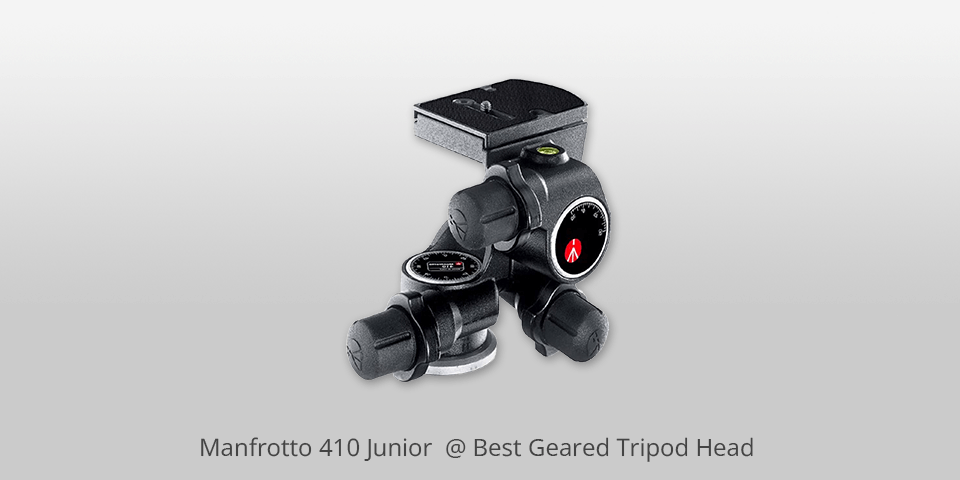
Material: Aluminum | Plate Type: RC4 | Weight Capacity: 11.02 lbs
The Manfrotto 410 Junior is the best geared tripod head for landscape, architecture, and macro photography, as well as videography. The weight of the tripod head is only 750 grams, which makes it one of the lighter ones in its class.
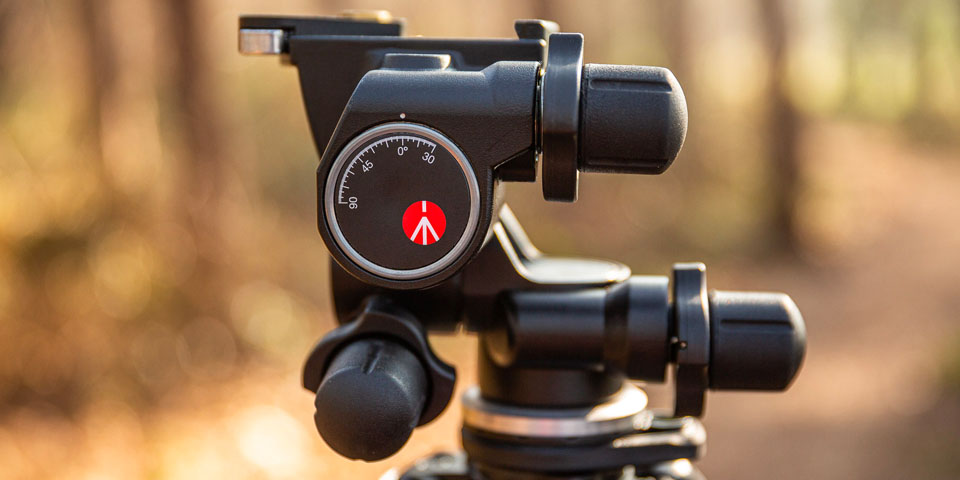
One of the main characteristics of the Manfrotto 410 Junior is its micrometric knobs that can be used to make the axes of the tripod head move as precisely as possible. These axes can be moved in three directions: front tilt, lateral tilt, and panoramic rotation at the base of the head. It can also be adjusted for a range of +90 to -90 degrees.
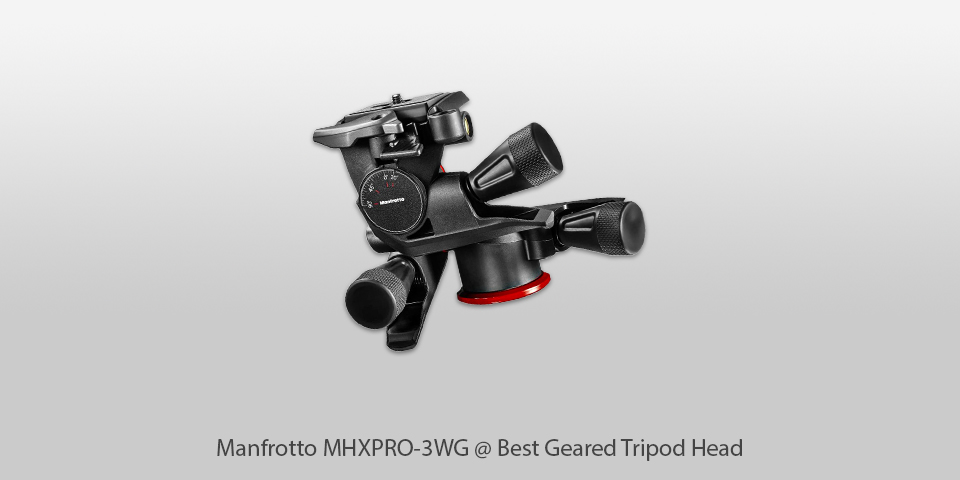
Material: Techno polymer | Plate Type: 200PL-14 | Weight Capacity: 8.8 lbs
With this tripod gear head, accurate framing of shots (one macro step at a time) on all three axes becomes possible. Its knobs guarantee ergonomic convenience even if you are going to use it for longer time periods. To enable large framing adjustments, the weight of the locking system is only 1.65 lbs.
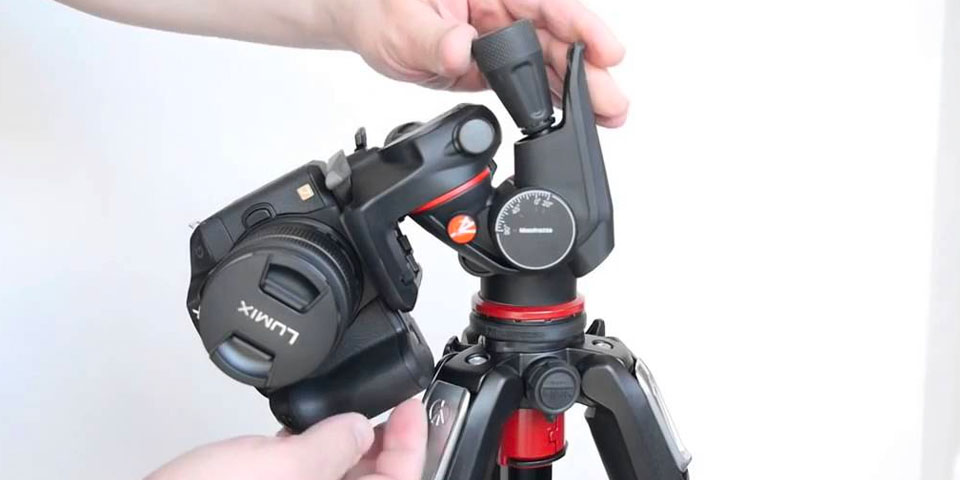
But it is able to handle a payload of up to 8.8 lbs. Feel free to connect DSLR cameras, sport optics or camcorders that are suitable for a 1/4""-20 mount to the quick release plate prior to attaching it to the pan-and-tilt head. The head is 360° rotatable, 90° forward or 20° backward tiltable along with 90° sideways for portrait orientation.
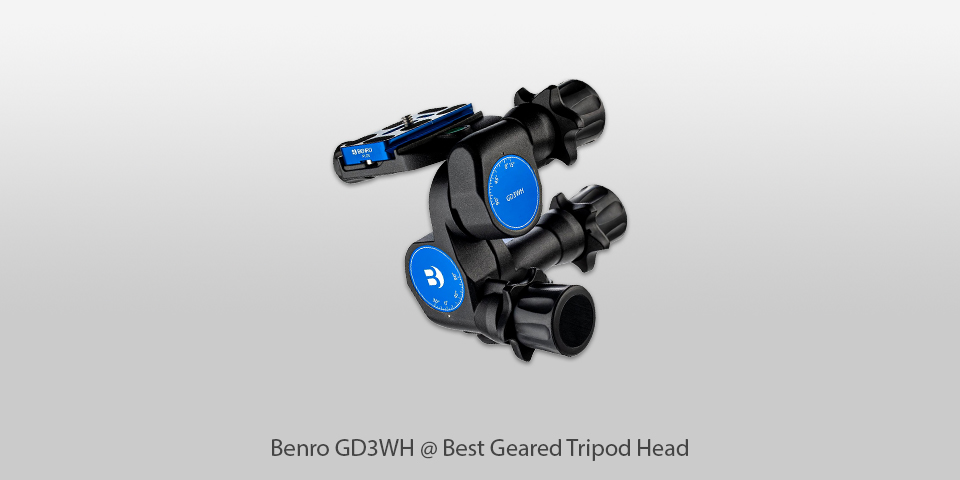
Material: Magnesium | Plate Type: Acra-Type | Weight Capacity: 1.9 pounds
The 4.3" tall GD3WH 3-way geared head from Benro lets you place the camera with the greatest precision. As soon as you set up this geared tripod head, it won’t be a problem to make all sorts of adjustments.
By slowly turning the knob, you will be able to control the accuracy of three separate geared movements.
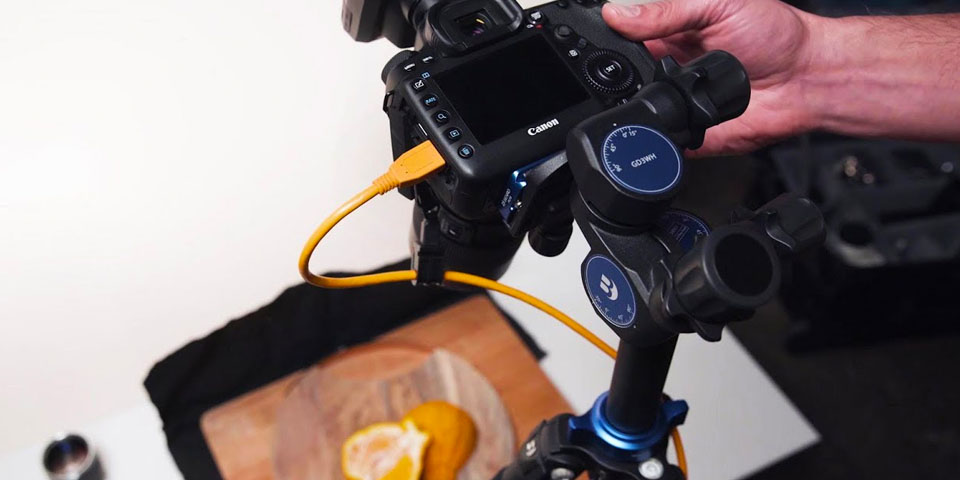
To place the camera immediately without the gears, you need to turn the inward wheel counter-clockwise. It will free up the clutch to help you regulate your camera type according to the preferred perspective.
Working with portrait mode is a bit of a challenge (think 90°) – but you only need to figure out how to set it up properly once.

Material: Not specified | Plate Type: Arca-Type | Weight Capacity: 2153.92 lbs
The Arca Swiss D4 unites a 3D tilt head and a spherical head. It is pretty small, without any levers that may bother you. When fastened to the tripod with heavy lens, the D4 works as a regular spherical head. In case the Y and X axes are open, it is possible to move the camera without any restrictions.

Due to the design of this geared tripod head, the center of rotation of X and Y- tilts is put in the same place. It results in the small pivoting radius of these movements, which lets you preserve the angle even if you decide to readjust the camera.
Besides, a self-locking shock absorption feature for the swivel function almost fully compensates for the camera’s weight.
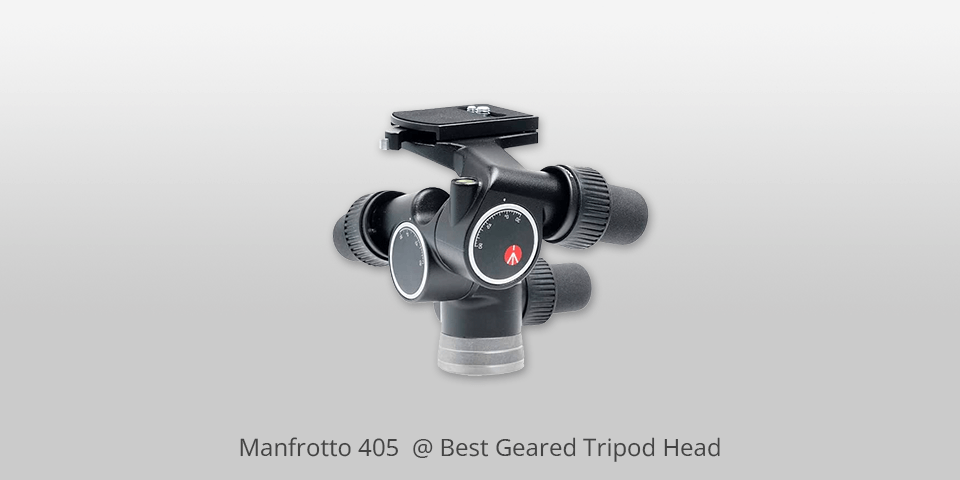
Material: Aluminum | Plate Type: RC4 | Weight Capacity: 16.53 lbs
The Manfrotto 405 has three snap-lock knobs that control panning and forward/backward tilt. An additional knob set within each of these snap-lock knobs provides incremental, geared adjustments for precise support.
This geared head is great for panoramic shots because it can rotate the camera by 360 degrees. It can also be used to frame landscapes without requiring you to turn the camera around, a useful feature when working with wide-angle lenses.
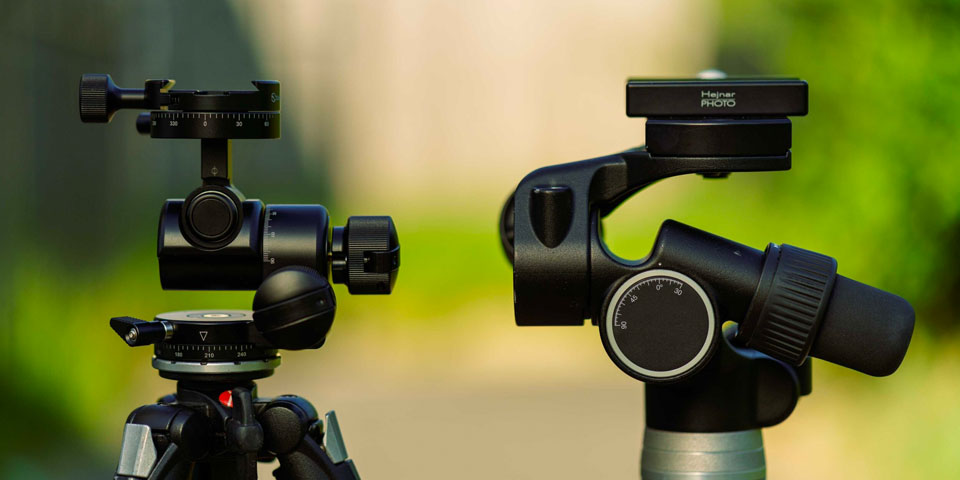
It is suitable for a wide range of cameras, from DSLRs and mirrorless cameras to video equipment. It also has an Arca-Swiss quick release plate for easy setup, and it comes with a leveling bubble that helps you set up your camera in the correct position.
| IMAGE | NAME | FEATURES | |
|---|---|---|---|

|
Manfrotto 410 Junior
OUR CHOICE
|
CHECK PRICE → | |

|
Manfrotto MHXPRO-3WG
LIGHTWEIGHT
|
CHECK PRICE → | |

|
Benro GD3WH
BUDGET
|
CHECK PRICE → |
In comparison with traditional ball and tilt-pan style tripod heads, geared ones enable standalone and step-by-step placement of the camera along geared tracks on the vertical, horizontal and rotational planes. If you often need to snap pictures of subjects in motion or find yourself constantly shooting hand-held and wishing to eliminate camera shake from pictures, pay attention to geared tripod heads.
Compatibility. The head will have to be compatible with the tripod and camera monopods you choose. This means that it needs to be able to support the weight of the camera and lens you are using.
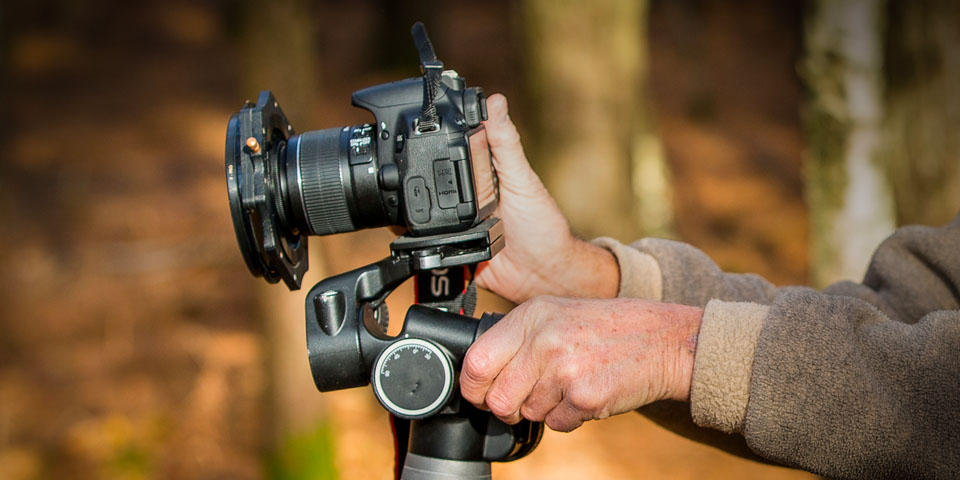
Level of precision. A good geared head should have separate knobs for adjusting front/back tilt, lateral tilt, and panning position. And each knob should offer fine, precise adjustments, allowing you to make the smallest of changes to your composition.
Quick-release system. Most of tripod gear heads on this list comes with special quick-release systems. They are meant to speed up the shooting process and minimize the chances of occasional shifting of the tripod while you are attaching or detaching the camera.
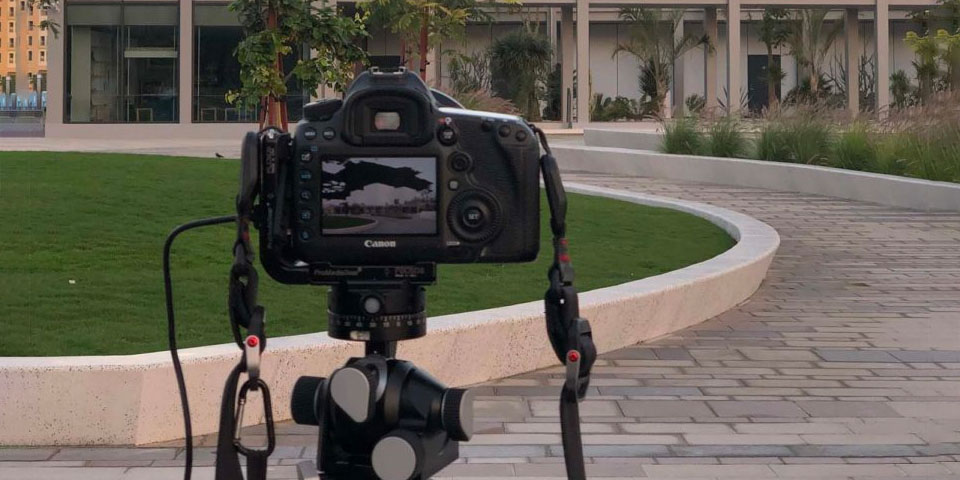
Photography genre. I made an attempt to photograph architecture with a tight ball head, but the result was far from being great. With a ball head, I had to fiddle with the perspective and make regulations – the entire process was frustrating. I ended up fixing all the issues in Photoshop, which took a lot of time. I wasn’t sure whether my composition was initially proper, as I had to crop, rotate and fix the distorted shot then.
Using the geared head, I only need to level the tripod, align the composition and that’s it – this will take me no more than ten minutes.
The combination of the geared head and a tilt-shift lens provides unmatchable accuracy and effective results. A geared head is a handy accessory for shooting in different genres, particularly, architecture, landscape, food and still life photography.
With a geared tripod head, you can accurately and thoroughly regulate it via gears. Such a head a bit similar to the panoramic tripod head. It has three knobs for controlling yaw, tilt and pan.
The three-way or pan-and-tilt head is the most conventional type of a tripod head. Its most notable characteristic is three control arms extending from the body of the head. With these arms, you can regulate the placement of the head one axis at a time – horizontal, vertical and panning.
It depends on the quality of the head you opted for. Because of the design, there is little space for a ball head to be less robust than a geared tripod head, which places the camera on the platform rather than what is basically an elevated platform.